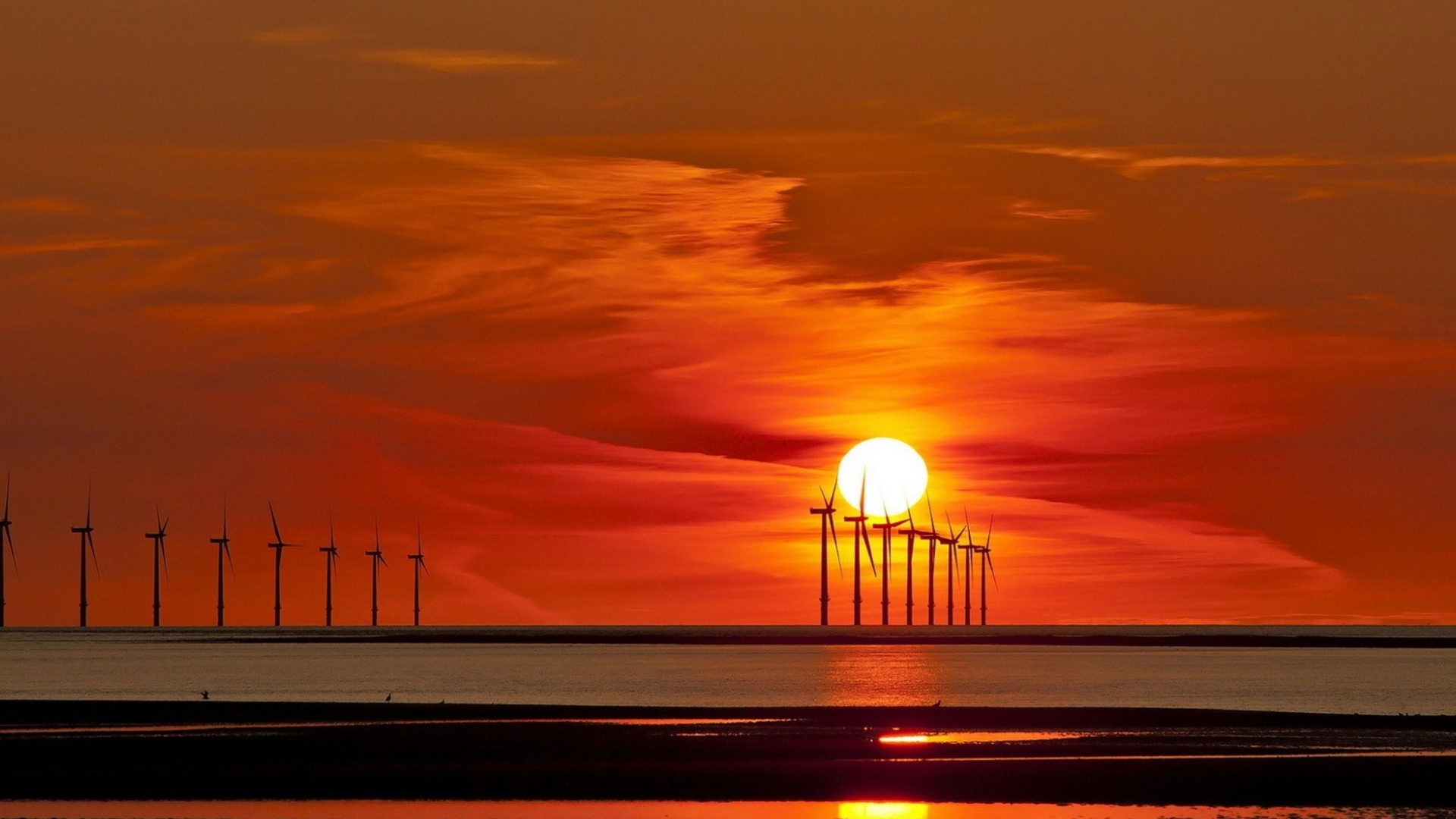Vacationing at the beach always provokes amazing sensory experiences. Everything about lounging in the sand soaking up sunshine, hearing waves crash along the shore, feeling a gentle breeze, and watching a sunset infused with citrus colors relaxes the mind, body, and soul. Now picture an arc of sparkling white turbines dotting the horizon and reflecting the setting sun, their blades twirling as waves tumble below. The image in itself is striking, made only more majestic by the prospect of a clean energy future. The ability to build turbines that each produce 6 megawatts of clean energy in offshore locations seems unreal. Wind capturing technology has made incredible strides since grain-grinding mills first became widespread, but something is holding it back from reaching its potential.
By 2013, the United States infrastructure allowed wind capacity to reach over 60 gigawatts worth of power. Without major breakthroughs in turbine design, in 2008 the US Department of Energy estimated that the United States could produce enough wind power to cover twenty percent of total energy by the year 2030. Considering wind production only increased from 0.5 percent to 1.2 percent of the US total energy production from 2008 to 2013, this leap may seem extreme.
Why hasn’t the wind industry developed as quickly as it perhaps could have? According to Dr. James Manwell, a Professor and the Director of the Wind Energy Center at the University of Massachusetts, “The main factor holding it back is politics, presumably because wind energy is threatening the status quo, mostly the fossil fuel industry.” In fact, much of the opposition for the first US offshore wind project, “Cape Wind,” has been championed by wealthy industrialists that built their fortunes from the fossil fuel industry. This group includes William Koch, one of the lesser-known Koch brothers. From his large fossil-fueled mansion(s) along Nantucket Sound, William would have a sublime view of the offshore project, which he has often deemed “visual pollution” and “expensive”. Manwell agrees with the latter, stating, “Offshore wind certainly has a great deal of potential, but it is still quite expensive. We need to industrialize the design and manufacturing of offshore wind turbines, following the model of Liberty ships of WWII to bring the price down.” Perhaps re-vamping the production of turbines would help the industry have a broader sphere of influence in the US, but are incentives high enough to encourage this mass production?
The year 2013 brought an end to the United States Production Tax Credit, or PTC. This means newly created wind farms will no longer receive this 2.2-cent subsidy per kilowatt-hour of energy produced. The loss of this incentive makes the creation and operation of new infrastructure more expensive in the short-term than previously established plants that run on fossil fuels. When considering long-term positive economic externalities—price stability and eventually renewable free energy for the wind industry—and negatives—air pollution, increased atmospheric CO2 release, and global warming for the fossil fuel industry, wind energy ends up being less expensive. Dr. Manwell believes, “In the long term wind energy can help make costs lower than they otherwise would be, especially if conventional generators are eventually required to internalize the external costs they impose on society.”
In his testimony on “The Effects of Rising Energy Costs on American Families and Employers”, Daniel J. Weiss, a senior fellow at the Center for American Progress Action Fund, stated, “fossil fuels—particularly coal and oil—are underpriced compared to their real costs to the economy. Adoption of measures to reduce the mercury, carcinogenic, and carbon pollution from fossil fuel use will level the price playing field with new, clean fuels that have not yet maximized their economies of scale or received 100 years of government assistance.” According to Manwell and Weiss, from an economic standpoint, renewable energies like wind are more cost efficient and trump the traditional fossil fuel industry in the long-term.
So what kinds of incentive programs can be enacted in order to encourage growth of the industry? In Germany, something called a Feed-in Tariff (FIT) is used to promote renewables. The FIT offers long-term contracts to power suppliers at a rate dependent on the type of energy supplied (i.e. wind, solar…etc). The FIT initially compensates producers at an above-retail rate, and eventually lowers to the retail rate, decreasing each year as materials become less expensive and the industry becomes more established. In Germany, the practice has proven to be a successful method of encouraging growth in the renewable industry. According to Manwell, “in the absence of FIT, the PTC is necessary,” so if the PTC is gone with the wind for good, will the government enact new legislation to encourage growth in the renewable industry?
